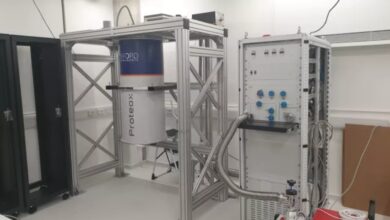James Webb Space Telescope Reveals Cosmic Mysteries, Dead Galaxies, and Mysterious Red Spots

Groundbreaking era of space exploration, the James Webb Space Telescope (JWST) has been providing humanity with unprecedented views of our universe, revealing secrets from its infancy. Launched three years ago, JWST has not only met but exceeded expectations, pushing the boundaries of our understanding of cosmic evolution with discoveries of dead galaxies and mysterious red spots.
The Enigma of Dead Galaxies
One of the most startling revelations from JWST is the discovery of the oldest “dead” galaxy ever observed, dating back to just 700 million years after the Big Bang. This ancient celestial body, found lurking in the early universe, had ceased star formation much earlier than current models would predict. This finding challenges the established theories of how galaxies evolve and die, particularly in such a young universe where conditions should have favored ongoing star formation. The galaxy’s quick transition to a ‘dead’ state suggests unknown mechanisms at play, prompting scientists to reconsider the dynamics of galaxy formation and the role of gas and dust in the early cosmos.
The Mystery of the Red Spots
Equally captivating are the numerous “little red dots” or “red monsters” JWST has spotted. These enigmatic objects, dating back to when the universe was just 600-800 million years old, appear as faint red glimmers in the telescope’s infrared observations. They are thought to be early galaxies, possibly housing supermassive black holes that are much larger than anticipated for that epoch. The redness of these galaxies indicates either an intrinsic property or the presence of significant dust, which could be altering the light we observe. This discovery has ignited discussions about the rapid formation of galaxies and black holes, suggesting that our models of cosmic evolution might need significant revisions to account for these phenomena.
Implications for Cosmology
These findings from JWST are not just expanding our visual catalog of the cosmos but are significantly altering our understanding of how the universe evolved. The dead galaxies suggest there might be mechanisms that halt star formation much earlier than previously thought, while the red spots indicate a potentially more dynamic early universe, where galaxy and black hole formation might have been far more efficient or different from what we understood.
Astronomers are now delving deeper into these mysteries, using JWST’s capabilities to further analyze these structures. The telescope’s ability to observe in infrared allows it to peer through cosmic dust that would obscure these ancient galaxies from other telescopes, offering a clearer picture of the universe’s dawn.
Looking Forward
With each observation, JWST continues to rewrite the narrative of cosmic history. As scientists and researchers analyze the data, they are not only refining existing models but are also excited about the “unknown unknowns” that JWST might reveal next. The telescope’s journey into the depths of space promises to keep us at the edge of our understanding, constantly pushing the frontier of human knowledge about our place in the cosmos.
The ongoing mission of JWST reminds us that the universe is full of surprises, each observation peeling back layers of mystery to reveal the complex tapestry of our cosmic origins.




